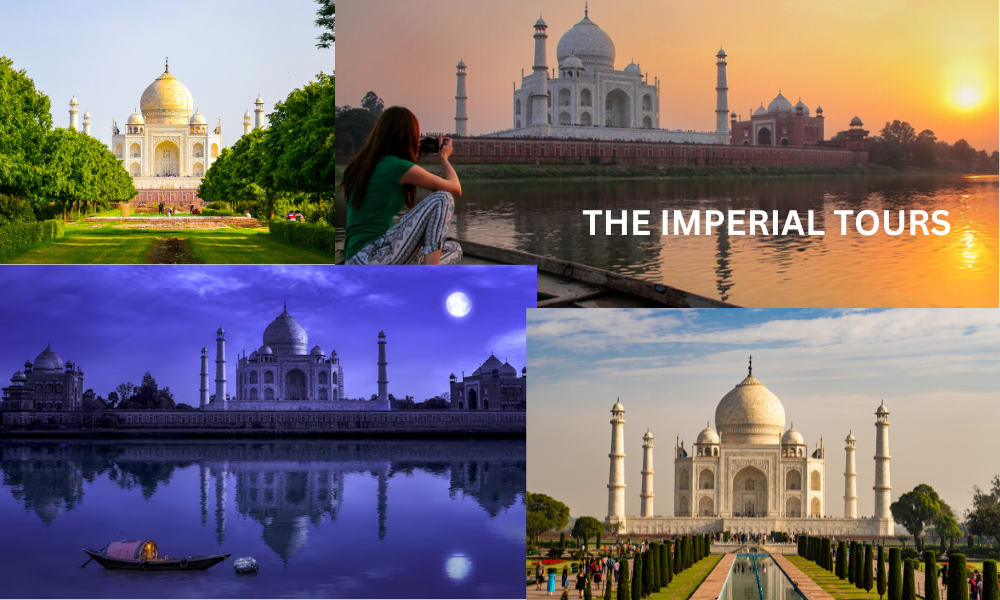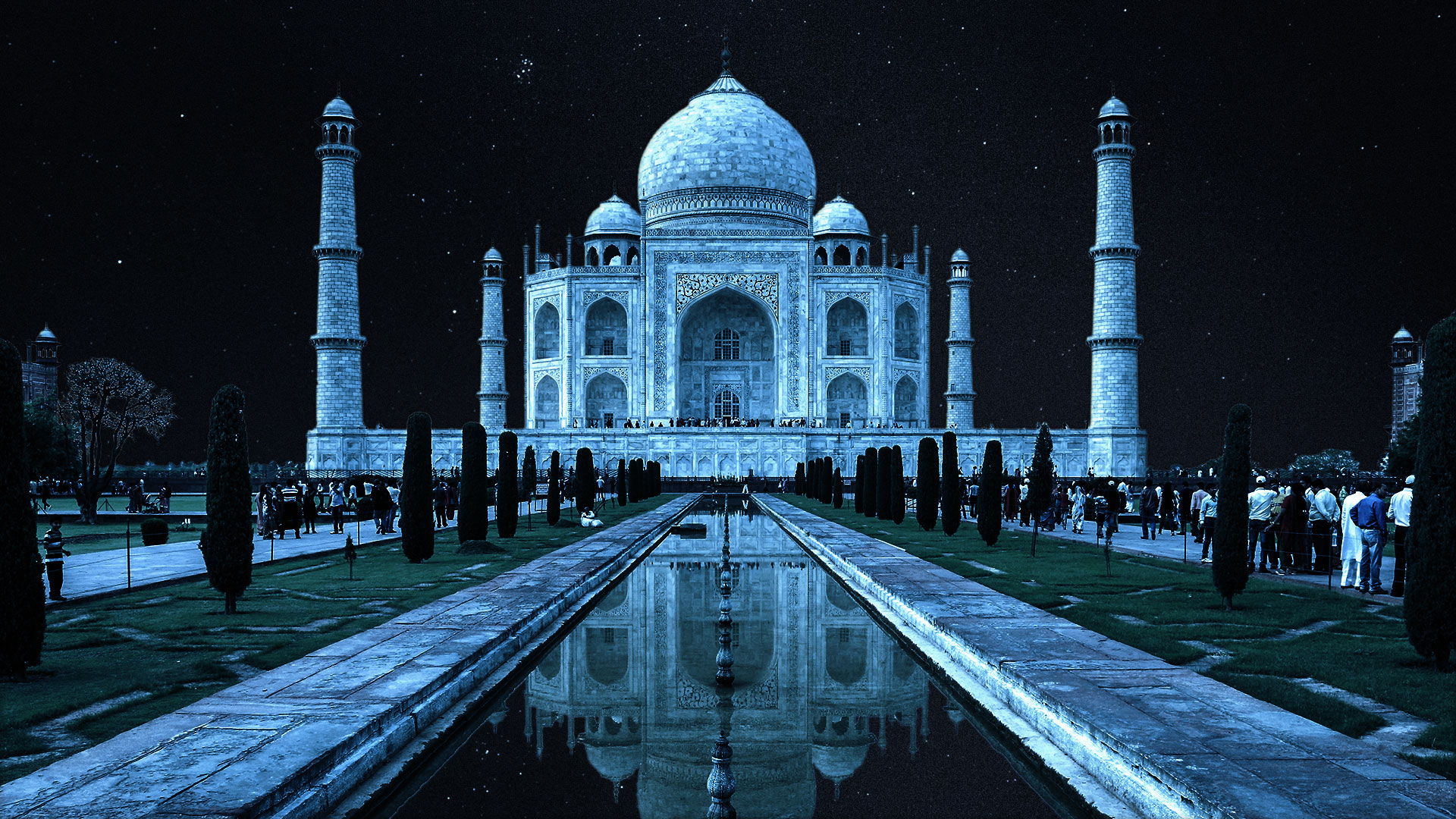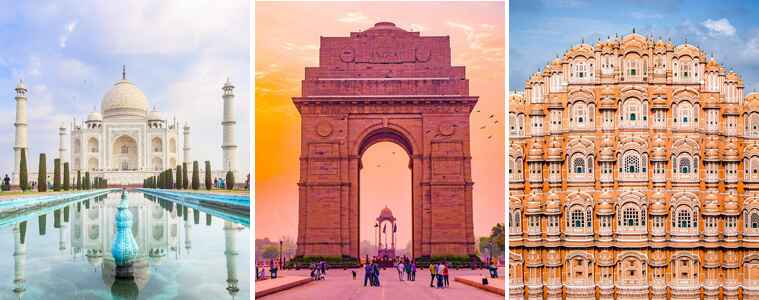“Under the silver moon’s soft glow, the Taj Mahal at night stands, pure as snow. A monument of love so grand, crafted by an emperor’s hand.”
Are these lines enough to explain the beauty of Wonder Taj?? Well!! Maybe not!!
Visit “The Taj Mahal at night”, surely your heart will say, If there were a heaven, it would be like this.
No wonder the beauty of the Taj Mahal is more flowing than poetry, more charming than a baby’s smile, more deep than the sky, and more glowing than a bride.
But Taj Mahal at night, shines brighter than the moon in the full moonlight, more white than the snow white.
Taj Mahal at Night
The Taj Mahal, a beauty wonder of the world, is the real example of eternal love and architectural brilliance. One of the most unique UNESCO world heritage sites, the Taj Mahal is the marvelous art of the Mughal era. The monument continues to captivate the imagination of hearts across the ages. Any visit to the Taj Mahal is a great idea, but beneath the moonlit, Taj Mahal multiplies its beauty and reflects the magic. That never ended from memories, and those words cannot explain.
When the day turns to night, the Taj Mahal gains an ethereal beauty. In the best period of the day, thousands of beauty lovers visit this very mausoleum to see its legendary beauty in various conditions of lighting. However, magic occurs only when the Taj Mahal is illuminated with a full moon’s gentle light, making it mingle with nature to blend this architectural treasure into a dream in reality.
The Night Enchantment of the Taj Mahal
The real glamor of this wonder monument blooms in the darkness when the moonlight sprinkles its light onto the Taj Mahal. The taj mahal, a wonder of love; a symbol that glows even in the dead of night. There is this belief that the full moon rises only to dress up and enhance the beauty of the Taj, to enhance its beauty. It is only when the moon is full and it is dressed with sparkling stars that one can see the Taj Mahal at night, a view many dream to have. A sight that captures one’s heart and soul.
The wonder of the Taj Mahal remains within its relation to the night, especially on full moon nights. Here, the white marble, so gently and subtly, sucks in the reflection of the moon, and it makes this pearl-like gem seem floating on the floor of earth. The moonlight along with the silence of the night allows the monument to carry an extraordinary serenity; it is as if the Taj Mahal itself is about to meditate.

Taj Mahal at Night Visit Guide
:-> Important Update: Night viewing is allowed only 5 nights a month — Full moon night + 2 nights before & after (excluding Fridays and the entire month of Ramadan).“
Many dreamed of visiting the structure during the night. The security reasons made it impossible for them to achieve this wish. All this changed in 2004, when the Supreme Court of India lifted the 20-year blanket ban on such visits. Since then, night visits to this monument have been allowed on five nights a month. The full moon night and two nights before and after the full moon are the nights when this visit is allowed. It is to be noted that this permission excludes Fridays and also Ramadan month because the Taj Mahal is closed on Friday.
To make a night visit, you should consider the tips:
Time of Access: There are eight slots within 30 minutes that make up the opening for viewing the Taj Mahal at night between 8:30 PM to 12:30 AM. It can accommodate 50 visitors at one time, and the total number of night visitors will reach 400.
:-> Visitors must reach the entry point at least 30 minutes earlier for mandatory security checks.”
Ticket Purchase: Tickets to view the beauty at night can be done 24 hours in advance at the Archaeological Survey of India (ASI) office in Agra. This office lies on 22 The Mall, Agra, and opens from 10:00 AM to 6:00 PM.
:-> Online booking for night viewing is still not enabled; visitors must purchase tickets in person at the ASI office.”
Ticket Details: For Night View
- Adult International ticket Price – INR 750
- Indian adult ticket price – INR 510
- Children 3 to 15 years old ticket price – INR 500
- Entry Children under 3 years old – free of charge
Important note before booking:
Booking Tickets can be canceled at the same location with a some amount of cancellation fee before 1:00 PM the day of viewing.
Entry Procedure:
- The visitors are reported at the Shilpgram VIP parking area near the Taj Mahal about 30 minutes before their scheduled time for security checks and briefing.
- The visitors are taken to the viewing area through a battery-operated bus on being cleared.
Viewing Restrictions:
- The night view of the Taj Mahal is from a designated red sandstone platform about 500 meters from the monument.
- Bags, mobile phones, and video cameras are strictly NOT allowed. Only still cameras and binoculars can be carried.”
- Security checks are extremely strict during night viewing, so carry only necessary items.”
Tips to Enjoy a Magic Visit of the Taj Mahal at Night
To fully enjoy your magical visit of the Taj Mahal, do remember the following tips:
Visitation during summer nights: The best time to visit the Taj Mahal at night is between March and November, as winter fog and cold will fog the view. Moreover, night visits will also be canceled in case of adverse weather conditions so it would be a good idea to plan your visit on clear nights.
Embrace the Moment: At 30 minutes, the view time may appear to be a little short and the distance a bit too far, but it’s irreplaceable gazing at the Taj Mahal under moonlight. Silence, the faint light of the full moon, and the twinkle of sparkly stars made up for a moment of beauty that any lover of Taj Mahal would carry with him or her for eternity.
Book in Advance: Night viewing time slots are limited in number; hence, booking of tickets in advance is highly advised to allow your visit at times when the magic of Taj Mahal can actually be seen .
:-> It is recommended to check fullmoon dates online and plan at least 2–3 days in advance.”
A never forgettable Night at the Taj Mahal
The experience of seeing the Taj under a full moon represents something that can be your everlasting experience. It is a chance to be able to view one of the world’s greatest wonders in light that not many get to see. Visiting the Taj Mahal at night will be a great golden opportunity to see how this architectural wonder becomes a pearl-like gem under the stars as it bathes in the glow of the full moon.
You May Also Read : Taj Mahal History in English








